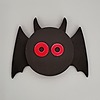HOME | DD
 jflaxman — C-33 Explorer
jflaxman — C-33 Explorer

#aeroplane #air #aircraft #alternate #cargo #concept #desert #dieselpunk #engineering #explorer #freight #future #general #history #illustration #james #medium #plane #purpose #retro #transport #trimotor #vintage #world #flaxman #jflaxman #art
Published: 2021-03-18 10:10:28 +0000 UTC; Views: 22308; Favourites: 319; Downloads: 82
Redirect to original
Description
The Namidian Union’s Explorer is a tough and reliable medium transport. It was first used to carry surveyors across Parangea’s western deserts and continues to serve the towns that have sprung up around mines and oases. Its ability to operate from smaller, rougher airstrips is an even more important asset in the mountains that divide the Union, as is its immunity to the flash floods and landslides that render roads unusable. Explorers are also popular with tourists whose thirst for adventure exceeds their desire for comfort while skydivers appreciate their large cargo holds and stability in level flight.
Design Features:
- The Explorer was designed to work in harsh, remote environments. Large payloads can be carried in the box-like fuselage; the high wing allows easy loading and improves ground visibility; a non-retractable undercarriage with shock-absorbent struts can take hard landings on bad runways; and three 14-cylinder radial engines give a fully loaded aircraft a surprisingly short takeoff run. Its less appealing traits include heavy flight controls, low top speed and high fuel consumption, though large fuel tanks in the wings give it an impressive range.
- The air-cooled radial engines create more drag than inline equivalents but are more reliable. Some Explorer operators remove their aircraft’s engine cowls to reduce weight and aid cooling, though this also increases drag. A fully loaded Explorer can keep flying on two engines and handling is only slightly affected if the central one is lost; a very lightly loaded Explorer can fly slowly but controllably on the central one alone.
- The standard spatted wheels can be replaced with larger heavy duty tyres for use on even rougher airstrips or floats for coastal operations. While flying boats like the Pioneer offer better handling on water some crews prefer Explorers due to their ease of conversion.
- The Explorer’s standard crew consists of a pilot and co-pilot, though a navigator and radio operator are usually carried on long operations. The cargo hold aft of the cabin is a spartan but roomy affair that can carry three tons of freight or eighteen passengers on long folding benches. Large sliding doors in the rear fuselage allow easy access; lugs on the floor keep cargo secure and smaller items can be carried in netting on the walls and ceiling. Aircraft used for tourism have more comfortable interiors and padded forward-facing seats.
- Namidian paramilitary forces use Explorers as general purpose transports or more specialised troop carriers. These aircraft have few modifications besides camouflage paint, armoured fuel tanks and machine guns for defence, though some have been fitted with bomb racks and larger door-mounted guns. They are not ideally suited for combat – the central engine occupies the best position for a bomb aimer/forward gunner and the propellers limit fields of fire – but they have been effective in small-scale operations against outlaws based in mountains and jungles. They have also proved their worth during natural disasters, delivering essentials and extracting casualties.
- This civilian transport has a primarily white colour scheme which helps cool its interior and reduces the chance of collisions at night. The upper nose and engine cowlings are painted black to lessen glare and the Namidian script on the tail identifies the aircraft.
Related content
Comments: 32

👍: 1 ⏩: 0

👍: 0 ⏩: 1

👍: 2 ⏩: 1

👍: 1 ⏩: 0

👍: 1 ⏩: 0

👍: 1 ⏩: 1

👍: 0 ⏩: 0

👍: 1 ⏩: 1

👍: 0 ⏩: 1

👍: 0 ⏩: 1

👍: 0 ⏩: 1

👍: 0 ⏩: 1

👍: 0 ⏩: 1

👍: 0 ⏩: 0

👍: 1 ⏩: 0

👍: 1 ⏩: 1

👍: 1 ⏩: 1

👍: 0 ⏩: 0

👍: 1 ⏩: 1

👍: 1 ⏩: 1

👍: 1 ⏩: 0

👍: 1 ⏩: 1

👍: 0 ⏩: 1

👍: 0 ⏩: 0

👍: 0 ⏩: 1

👍: 0 ⏩: 0

👍: 2 ⏩: 1

















